Art & Collectibles
show off your passion with mercedes-benz Art and Collectibles
There's more to car culture than the vehicles themselves. Beyond fuel injection pumps, turbos and oil encrusted engines, automobiles throughout history have influenced everything from politics and city planning to design, art, and fashion, literally changing the face of the everyday world with which we interact.
Through our art and ongoing design series we're continuing to build and enhance this storied culture. Add one of our unique designs to your collection and contact us today with specific questions and ideas.

Iconic Models: Series 2 (in progress)
Commission ONE for your favorite Model or Collect the series

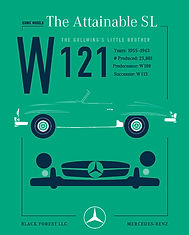

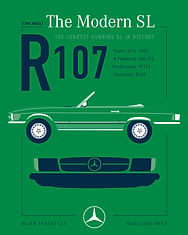

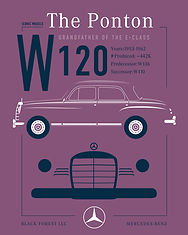

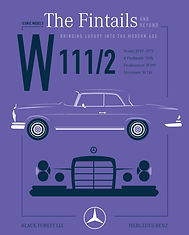



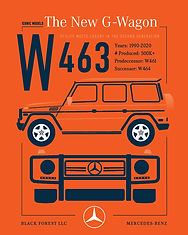


Custom Art
Turn your classic into
a literal work of art
We know your passion for classic cars doesn't end when you step out of your vehicle, so why leave it in the garage?
Have our artist-in-residence turn your classic into a literal work of art. Work directly with our artist to choose a size, style, and background that will show off your Mercedes-Benz or classic of any era or choose from a variety of premade original artwork from the private stash.
It's time to upgrade from the generic posters and photos you've had on your wall since grade school. From realism, to abstraction, illustration, technical drawings and even vintage posters, get a unique expression of your passion that fits your personal style.






Legends of Mercedes Benz
Get to know the legends THAT BUILT the brand








With a history over 100 years old, there's no lack of legendary automotive innovators when it comes to Mercedes-Benz. From creating what many consider to be the first practical automobile, to innovations at the highest level of racing, to introducing revolutionary passenger safety concepts, take a minute to meet some of the MVPs that built the brand.

Karl Benz | 1844-1929
Karl Benz was born in 1844 and began studying mechanical engineering in 1860 at the University of Karlsruhe. In 1878 after a number of unsuccessful jobs, Benz finished his design for a two-stroke engine, was awarded the patent in 1879, and went on to invent automotive mainstays such as the spark plug, carburetor, clutch, the gear shift, and the water radiator. It wasn't until 1885 that Benz, after finally finding some success with Benz & Cie, developed and produced his "Benz Patent Motorwagen", the first automobile entirely designed to generate its own power, making him the official father of the modern automobile. The Motorwagen was patented on January 29, 1886 and in 1888 was made available to the public. Over the final decade of the nineteenth century, Benz & Cie quickly grew into the largest automobile company in the world and continued to break automotive ground along the way, eventually becoming the world leader in luxury automobiles.

Gottlieb Daimler | 1834-1900
Gottlieb Daimler was born in 1834 and already showed an interest in engineering by the age of 13. After spending his early years training as a gunsmith, he became the foreman for a railway locomotive manufacturer where he developed his belief that the steam engine was destined to be superseded. He spent the next thirty years working to produce machine tools and woodworking machinery until the Otto and Cie Company, reorganized as Gasmotoren-Fabrik Deutz, appointed Daimler as factory manager. He brought in a young Wilhelm Maybach as chief designer and improved production for the factory, but, due to issues with management, Daimler resigned to set up his own shop in 1882. Maybach quickly followed and, by the end of 1883, the pair had patented their first ligroin-fueled engine. By 1885, they fit their so-called “Grandfather Clock Engine” to a specialized two-wheeled chassis, making the first vehicle powered by combustion engine. In 1886, and though only 60 miles apart, both Daimler and Karl Benz independently developed automobiles, though Daimler and Maybach would continue using their engines mostly for boats. In 1893, after many years of internal battles and philosophical differences, Daimler left DMG and continued working with Maybach, who had also left the company, on a freelance basis. One year later in the first organized automobile race, DMG’s entries were embarrassed by the independent duo and DMG was forced to bring the founder back. Daimler died in 1900 and, though largely uncooperative and combative during his life, DMG and their chief rival, Benz & Cie, merged in 1926, eventually leading to the Mercedes-Benz we know today.

Wilhelm Maybach | 1846-1929
Wilhelm Maybach was born in 1846 and was orphaned by age 13, leading Reutlingen, a philanthropic agency, to take him in as a student, stimulating his engineering inclinations. By the time he was 19, Gottleib Daimler, then his workshop manager, noticed his abilities and took him on as his main assistant, a post he held until Daimler’s death in 1900. In 1883 Daimler and Maybach patented their first engine fueled by lingroin and Maybach persuaded Daimler to fit the engine to a vehicle, creating the first combustion powered vehicle. in 1885 they developed their “Grandfather Clock” engine, regarded as the precursor to all modern petrol engines and by 1889 they were licensing their first patents abroad. By 1891, Maybach and Daimler had fallen out with the management of DMG and had left the company. They continued to work together with funding from Daimler and in 1894 Maybach released his third engine model, gaining worldwide attention. After Daimler’s death in 1900, Maybach worked with Austrian dealer Emil Jellinek on a completely new kind of car and, with its release in 1902, DMG finally acknowledged the potential of commercial success in automobiles. DMG officially registered the Mercedes trademark in 1902, but, due to a demotion, Maybach left the company in 1907. Maybach went on to work on engines for Zeppelin and other airships from 1909 to 1919, when the treaty of Versailles prohibited airship production in Germany. Maybach began producing his own luxury vehicles in 1921, setting the stage for one of the modern day’s most luxurious and exclusive automobile brands.

Béla Barényi | 1907-1997
Béla Barényi was born in 1907 and is considered the father of passive safety in automobiles. After studying mechanical and electrical engineering in Vienna, he worked at various automobile companies before joining Daimler-Benz in 1939. Barenyi believed that safety was the future of automobiles and, due to his conviction, won over members of the board who put him in charge of the pre-development department from 1938 to 1972. He is credited with over 1,200 inventions, including the development of the crumple-zone, the non-deformable passenger compartment, collapsable steering column and safer detachable hardtops. Barenyi was inducted into the Detroit Automobile Hall of Fame in 1994 and died in 1997. In memorial, a Mercedes advertisement featuring Barényi’s image stated: “No one in the world has given more thought to car safety than this man.”

Alfred Neubauer | 1891-1980
Alfred Neubauer was born in 1891 and began repairing motor vehicles while an officer in the Imperial Austrian Army. After WWI he joined Austro-Daimler and became the chief tester, also driving in a number of races from 1922 onwards, although not finding much success. In 1923, Neubauer moved to the Daimler works at Stuttgart, and in 1926 created the position of racing team manager. He pioneered the practice of communicating strategy and tactical information to drivers during races with boards and flags and instituted military precision of his pit crew, giving the Mercedes team a consistent time advantage over rivals. After WWII, Mercedes-Benz was eager to get back into racing, but new regulations in 1954 forced them to compromise with an already created model, the 300, resulting in the iconic 300SL. After numerous victories throughout 1954 and 1955, a 300SLR driven by Frenchman Pierre Levegh was catapulted into the crowd at Le Mans, killing more than 80 people. Mercedes-Benz withdrew from racing and Alfred Neubauer retired soon after.

Rudolph Uhlenhaut | 1906-1989
Rudolph Uhlenhaut began life in London and later pursued studies in Munich. In 1931, he joined Mercedes-Benz to work on the development of the 170V, and in 1936 assumed leadership of the race car department. As a talented driver, he was able to spot deficiencies of the car’s design, however, he was valued for his engineering skills and never raced competitively. The new W125 dominated the 1937 Grand Prix season and was considered the most powerful Grand Prix car until turbocharging became common in the 80s. The racing team ceased due to WWII and Uhlenhaut began developing aircraft engines for Daimler-Benz. He returned to Mercedes-Benz in 1948 and in 1952 designed the W194 300SL race car, which inspired the iconic and legendary 300SL Gullwing, as well as the 300SLR. Uhlenhaut retired in 1972 and died in Stuttgart in 1989. In the spring of 2022, one of two 300 SLR Uhlenhaut Coupes, a road-legal version of the 300SLR race car, was auctioned for $143M, becoming the most expensive automobile in history.

Paul Bracq | 1933-
Paul Bracq began his design career in the studio of Philippe Charbonneaux where he served as assistant from 1953 to 1954. Here he produced designs for Citroen and Pegaso. Following military service from 1954 to 1957, Bracq worked for Daimler-Benz, heading the design studio until 1967. Here he styled all of the major models from the 60’s from the 600 to the iconic 230Sl/250SL/280SL pagodas. In 1967, Bracq returned to France were he worked on the design of the TGV high-speed passenger train, later moving to BMW to work on the top-of-the-line 7 series. Despite just 10 years at Daimler-Benz, Bracq’s contributions revitalized and revolutionized the brand, leaving a lasting legacy that extends far beyond his time working for the company. Bracq continues to work on various projects and regularly judges car competitions such as the prestigious Pebble Beach Concourse D’Elegance.

Bruno Sacco | 1933-2024
Bruno Sacco was born in 1933 and was inspired toward car design after seeing an Raymond Loewy-styled 1950 Studebaker Commander Regal in 1951. After failing to gain employment from Ghia and Paninfarina, Sacco moved to Germany and took a position as a stylist for Daimler-Benz. Although he only intended a brief stay at the company. he rose through the corporate ranks at Daimler-Benz, becoming chief engineer in 1974, and then taking over as head of Daimler-Benz' styling center in 1975. Until he retired in 1999, Sacco was responsible for the design of every Mercedes road car, bus and truck, including the brands most iconic cars from the last 25 years of the 20th century. He was shortlisted as one of the 25 Car Designers of the Century in 1999, and was inducted into the Automotive Hall of Fame in 2006 and the European Automotive Hall of Fame in 2007.